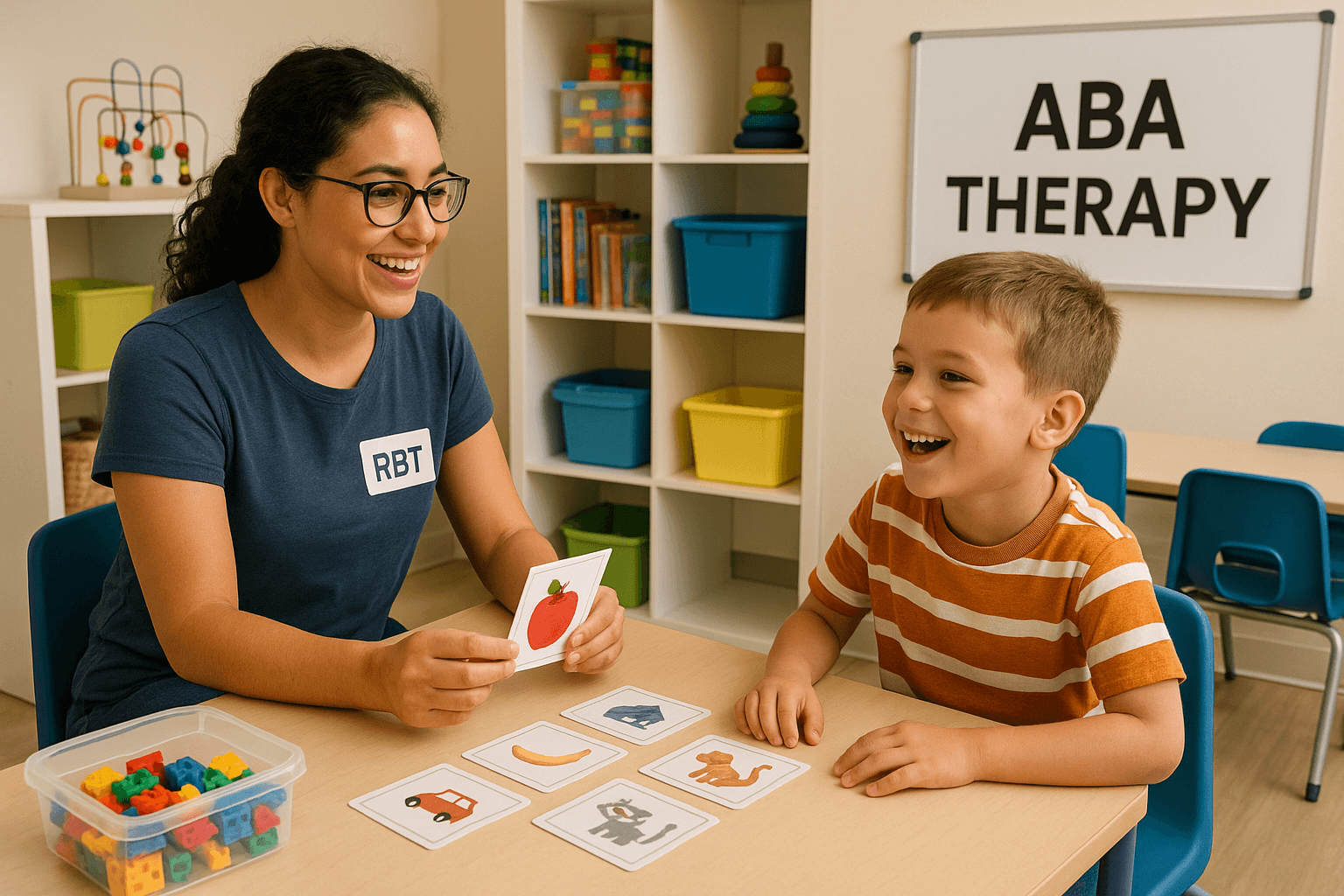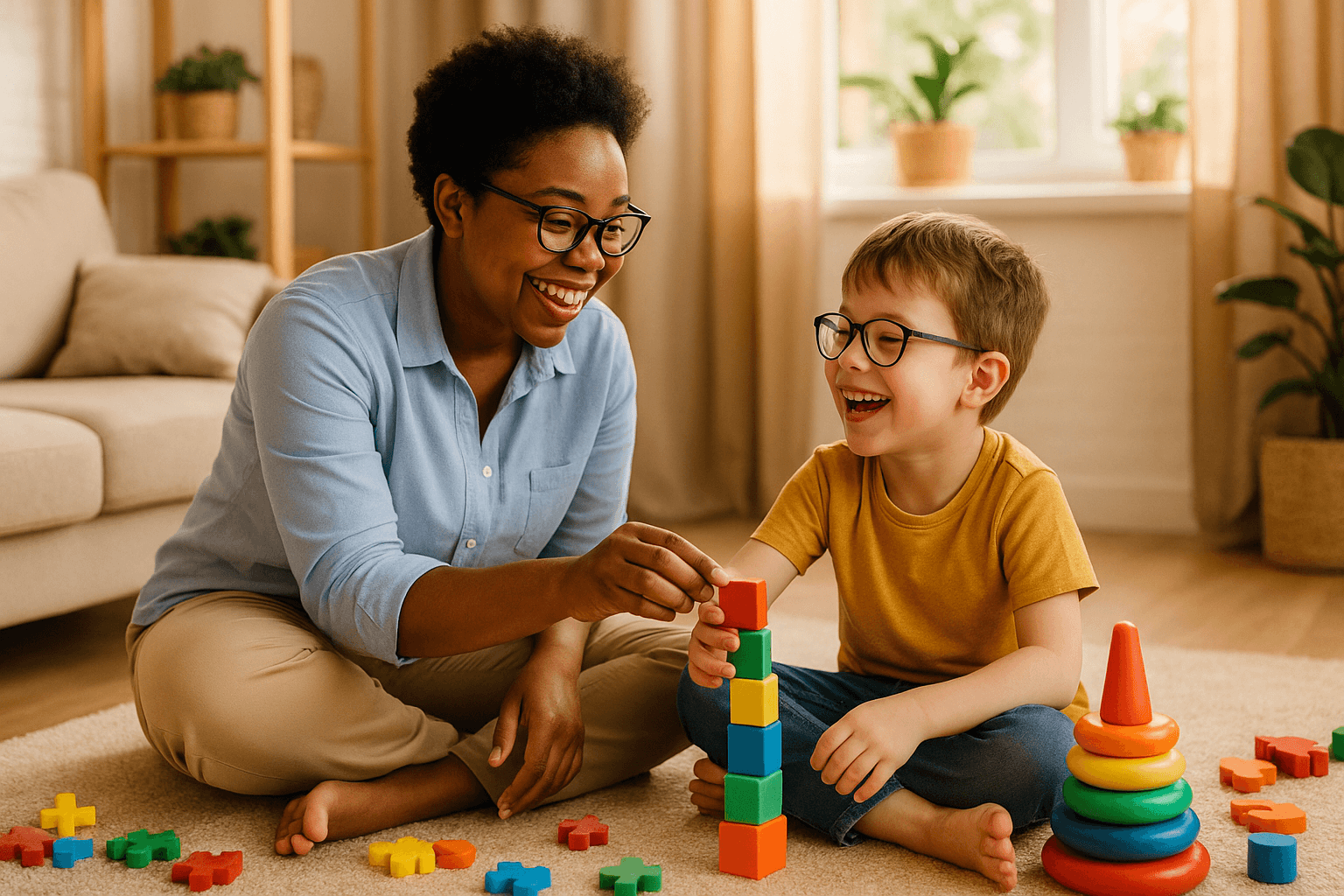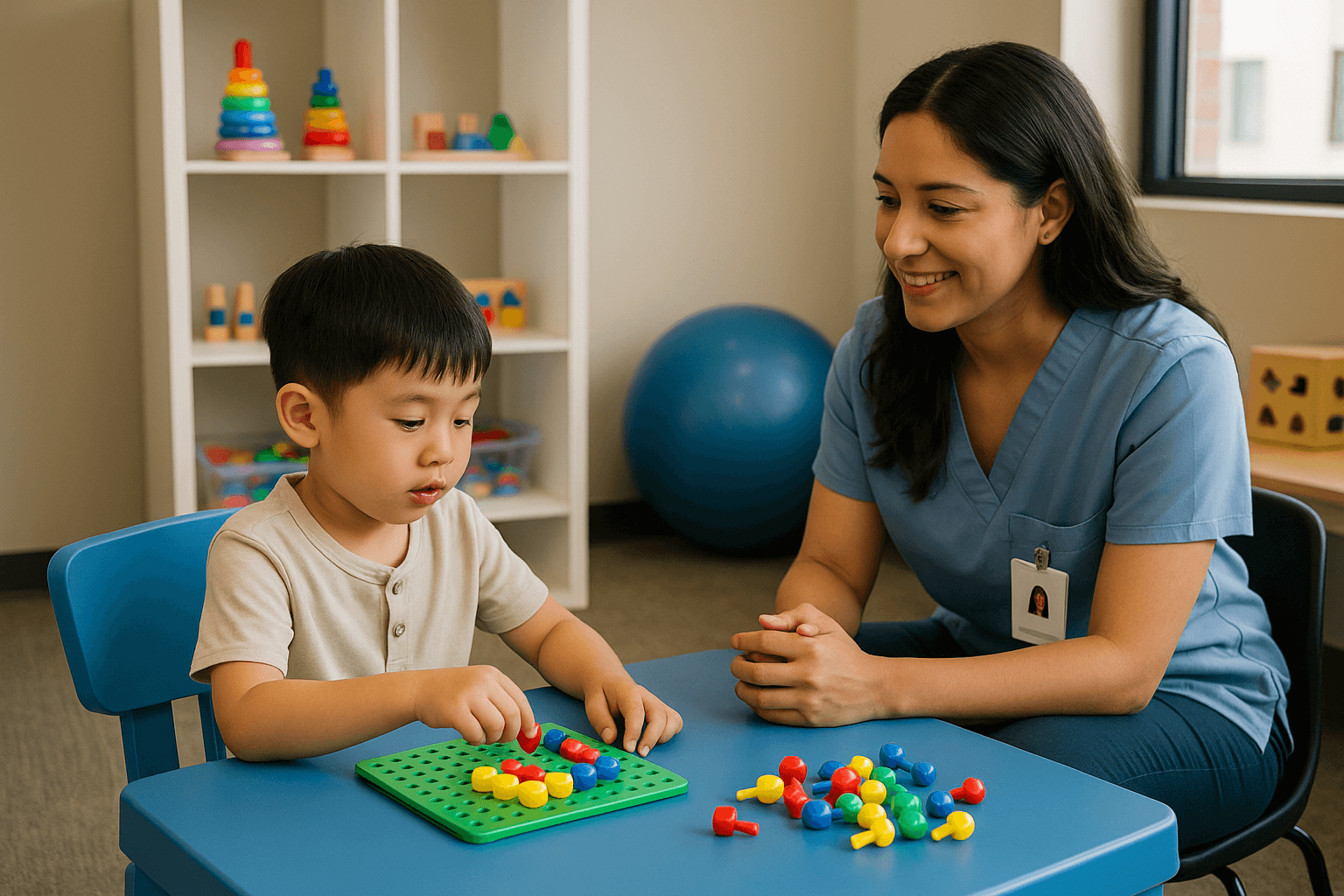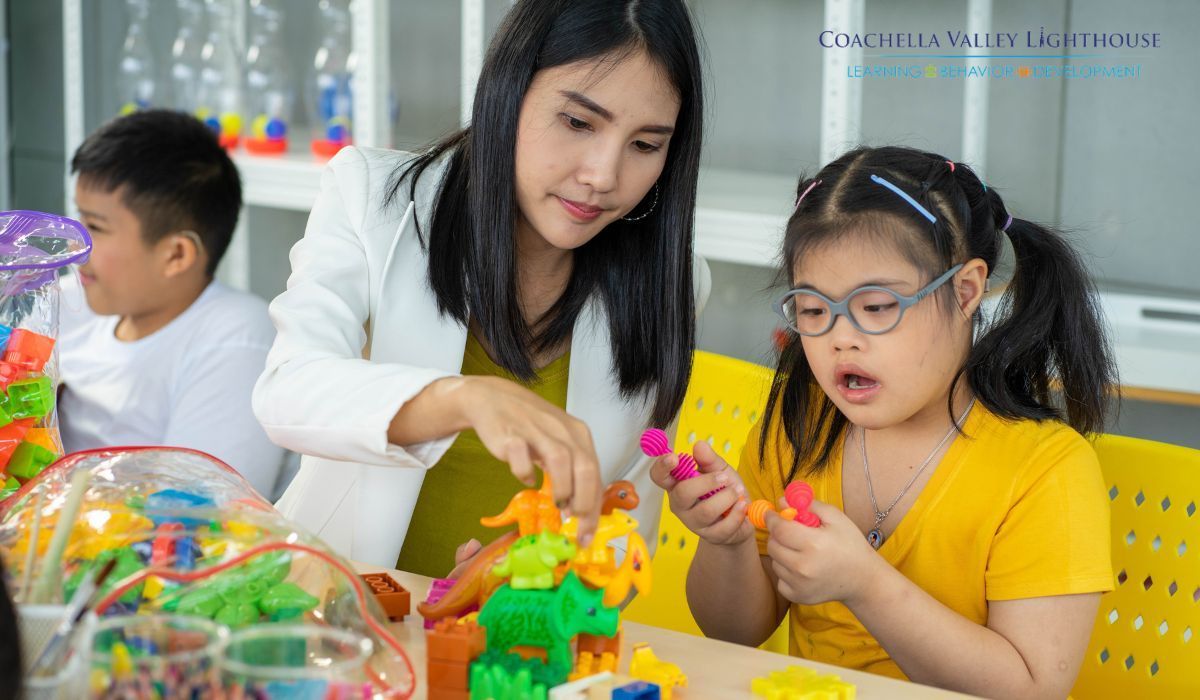20 Tips for Effective Parent-Teacher Communication During ABA Therapy
Parent-teacher communication is a cornerstone of successful Applied Behavior Analysis (ABA) therapy.
ABA therapy, known for its evidence-based approach to fostering positive behavioral changes, is most effective when parents and teachers work together as a cohesive team.
Let’s dive into the invaluable tips for enhancing communication between parents and teachers, ensuring a harmonious and supportive environment for the child's growth and development.
1. Cultivating a Positive Attitude
Effective communication begins with a positive attitude.
Both parents and teachers must approach discussions with unwavering optimism, guided by a shared aspiration to facilitate the child's growth and development through ABA Therapy and classroom interventions.
Positivity sets the tone and permeates the entire therapeutic journey, bolstering the child's progress.
2. Navigating Clear Channels of Communication
Communication channels serve as the lifeline of collaboration.
Determining the most efficient and accessible modes of communication, whether through email, phone calls, in-person meetings, or a fusion of these, lays the groundwork for effective dialogue between parents and teachers.
3. Establishing a Regular Communication Schedule
Consistency is the cornerstone of efficient communication.
By establishing a structured routine for check-ins and updates, parents and teachers can synchronize their efforts, ensuring the child's progress is consistently monitored and necessary therapeutic adjustments are made promptly.
4. The Art of Respect and Empathy
Respect and empathy are the linchpins of successful communication.
Each participant in the dialogue should approach discussions with a deep understanding and respect for the other's perspective and experiences.
Assume positive intent and seek clarification by having a discussion about the issue.
This forms the basis of a harmonious and productive partnership.
5. The Value of Sharing Information
Transparent information-sharing is paramount.
Both parents and teachers should endeavor to keep each other informed about developments, successes, and challenges in the child's life.
This extends beyond the confines of the classroom, including insights into the child's behavior and preferences at home.
6. Active Listening
Listening is an oft-neglected facet of communication.
Active listening is invaluable. All parties involved should lend their full attention during discussions and, critically, refrain from interrupting, allowing ideas and concerns to be fully expressed.
7. Defining Roles and Responsibilities
A clear distinction of roles and responsibilities is vital to avoid misunderstandings and overlap.
Through open dialogue, parents and teachers can elucidate their roles in coordinating care between ABA therapy and the classroom, fostering a seamless and coordinated approach.
8. Fostering a Shared Understanding of ABA Principles
Knowledge is power. Parents and teachers must acquire a foundational understanding of ABA principles for fruitful discussions around behavioral interventions.
This shared knowledge is a common language, facilitating more productive and informed exchanges.
9. Embracing Feedback
Feedback, whether from parents or teachers, is invaluable. It is a catalyst for growth and improvement.
Parents should feel encouraged to share insights into the child's preferences and behaviors at home, while teachers can offer valuable observations from the classroom.
10. Creating a Safe and Welcoming Environment
An environment that promotes open expression without fear of judgment is a hallmark of effective communication.
Both parents and teachers should strive to foster such an atmosphere, ensuring every voice is heard and respected.
11. Celebrating Small Wins
Recognition of achievements, no matter how incremental, bolsters morale and motivation.
Parents and teachers should make it a practice to celebrate even the tiniest milestones, providing the child with positive reinforcement and encouragement to continue their progress.
12. Sharing Resources
They are sharing resources, whether articles, books, or online courses related to ABA therapy, which can be a powerful tool for enhancing understanding and knowledge.
Both parents and teachers should actively exchange these resources, promoting continuous growth.
13. Attending Workshops and Training Together
Participating in ABA therapy workshops and training sessions can cultivate a collaborative spirit as a unified team.
These shared experiences deepen understanding and strengthen the bond between parents and teachers.
14. Crafting a Unified Goal Plan
A well-defined plan with specific objectives forms the roadmap for a child's progress in ABA therapy and at school.
Parents and teachers should collaboratively establish this plan, with regular reassessments and adjustments as the child's needs evolve.
15. Safeguarding Confidentiality
The privacy and dignity of the child must always be upheld.
Maintaining confidentiality regarding sensitive information related to the child is ethically imperative and a foundation of trust within the communication framework.
16. The Wise Use of Technology
Technology can be a double-edged sword in communication. While it can expedite and streamline interactions, it should be relied upon sparingly.
When in doubt about a written statement, reach out and have a discussion to clarify.
A balanced approach that integrates technology while preserving personal connections is ideal.
17. Patience as a Virtue
Progress in ABA therapy is often gradual and nonlinear.
Both parents and teachers must exercise patience, recognizing that setbacks are inherent to the journey.
It is in these moments that patience and resilience are tested and proven.
18. Involving the Child
As children mature, they should have an increasing say in their therapy and educational experience.
Including them in discussions and decisions, where age-appropriate, fosters their autonomy and self-advocacy skills, ensuring a more inclusive approach.
19. Seeking Professional Mediation When Necessary
Communication challenges can sometimes persist.
In such cases, involving a qualified mediator or therapist specializing in ABA therapy may be wise.
These professionals can facilitate discussions and help both parties find amicable solutions.
20. The Imperative of Reflection and Adaptation
The ABA therapy landscape is ever-evolving.
Regular reflection on communication methods and a willingness to adapt and improve them are crucial for sustaining a dynamic and effective partnership between parents and teachers.
Conclusion
Empower your child's journey with ABA therapy by embracing effective communication.
Visit CV Lighthouse for 20 comprehensive tips to strengthen the partnership between parents and teachers, optimizing your child's therapy experience.
Together, we can ensure that every child receiving ABA therapy reaches their fullest potential.
Challenges may arise, but we can navigate the path toward positive outcomes for all through open and collaborative communication.
Start your journey to success today at Coachella Valley Lighthouse.
FAQs (Frequently Asked Questions)
Why is effective communication crucial in ABA therapy?
Effective communication ensures that parents and teachers work together seamlessly to support the child's development, creating a conducive environment for ABA therapy to thrive in the community.
How do I initiate communication with my child's ABA therapist?
Start by reaching out via email or phone to introduce yourself and express your desire for open communication. Most therapists are more than willing to engage with parents.
Is there a recommended frequency for updates from my child's ABA therapist?
While the frequency of updates may vary, it's advisable to establish a regular schedule during your initial meeting. Monthly or bi-monthly updates are often a good starting point.
What should I do if I disagree with my child's ABA therapist about a specific aspect of their therapy plan?
Address your concerns openly and respectfully with the therapist. If disagreements persist, consider seeking guidance from a supervisor or a second opinion from another qualified therapist.
How can busy parents stay actively involved in their child's ABA therapy communication?
Employ convenient communication methods such as email or phone calls and consider designating a trusted family member or friend as a liaison if needed.
Is it necessary for both parents to actively communicate with the ABA therapist?
While ideal, it's only sometimes possible. In such cases, select one parent as the primary communicator but ensure the other remains informed and available as needed.
What are some common misconceptions about ABA therapy that could affect communication with my child's therapist?
Misconceptions may include believing ABA is solely focused on compliance or a one-size-fits-all approach. It's essential to clarify any doubts or misconceptions with your ABA treatment team.
How can I support my child's ABA therapy at home, and how should I communicate these efforts with the therapist?
Collaborate with the therapist and BCBA to establish consistent strategies and routines at home. Regularly share updates on your child's progress, including any successful implementation of therapy strategies.
What should I do if I feel overwhelmed by the information and recommendations provided by the ABA therapist?
Communicate your feelings of overwhelm with the therapist and BCBA, who can help you prioritize strategies and create a manageable plan tailored to your child's needs.
How can I ensure that my child is comfortable with their ABA therapist, and how do I address any concerns my child may have?
Engage in open conversations with your child about their feelings regarding therapy and their therapist. If discomfort or concerns arise, discuss them with the therapist to find solutions that enhance the child's comfort.
Are there support groups or resources available for parents of children receiving ABA therapy?
Your community may offer various support groups and resources for parents of children with special needs, including ABA therapy. Reach out to local organizations or the therapist for recommendations.
What should I do if I notice a sudden change in my child's behavior during ABA therapy?
Promptly communicate any changes or concerns with the therapist and the supervising BCBA. Sudden behavioral changes may require adjustments to the therapy plan, and early intervention is crucial.
Is involving other professionals, such as speech or occupational therapists, in my child's ABA therapy communication beneficial?
Collaboration with other professionals can be highly beneficial. Discuss this with your ABA provider, who can help coordinate efforts and ensure a holistic approach to your child's development.
Can ABA therapy be adapted to accommodate cultural differences and values within the diverse community?
Absolutely. ABA therapy can and should be culturally sensitive. Communicate your cultural values and preferences to the supervising BCBA, who can tailor the therapy plan accordingly.
How can I prepare for parent-teacher meetings or updates with my child's ABA therapist to make them more productive?
To maximize the productivity of meetings, compile a list of questions, observations, and concerns in advance. This proactive approach ensures that important topics are addressed during your discussions.











